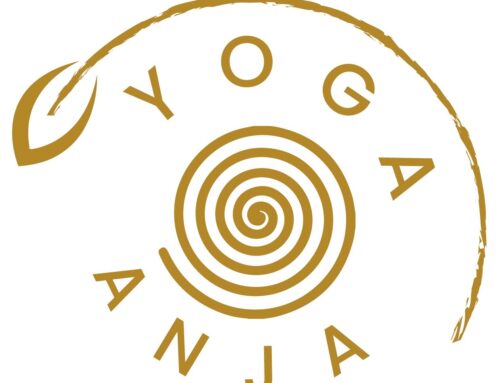Bathing History: Hamam, the Turkish Bath
Bathing traditions in Tirol developed centuries ago from people seeking refreshment with cold, fresh, clean mountain water during hot summer months.
What could be more different than another bathing culture with heat that emerged in another part of the world, the hamam or Turkish Bath.
Hamam means ‘something that heats’
The Turkish word ‘hamam’ is close to the Arabic word ‘hammam’, which means something like
– to be hot, or
– something that heats.
The Turkish bath is a wet variant of a heat experience, similar to a Western steam room, a Russian banya, or a sauna.
The History of the Turkish Bath
The tradition of the Turkish Bath is said to date far back to a time, before the Turks reached Anatolia. Traditions of Roman and Byzantine rituals merged and developed into a new concept with the addition of the Muslim concern for cleanliness.
“The hamam combines the functionality and the structural elements of Anatolia, the Roman thermae , Byzantine and Arabic version of the Greek Roman Baths and has a more improved style and functionality from these structures.”
Hamams are typically single-sex, where men and women have their separate bathing houses, or opening hours are strictly reserved for either.
Not every hot room labeled ‘hamam’ is a hamam
Unfortunately I have seen many, rather simple steam rooms, that are labelled “hamam”. Shame. Because a simple small steam room can never stand for the rich history, culture and service idea that is deeply embedded in an authentic hamam ritual. Besides, the room itself is only half of a hamam experience that can never be complete without a skillful hamam master.
Public baths played major roles in many cultures and societies
Unlike today where we consider bathing a rather private affair, public bathing used to play a major role in many societies and cultures in community life. The numerous public baths were an important institution in many Middle Eastern cities for many centuries. They promoted hygiene, served as social gathering places, and fostered public health.
Modern private bath rooms in residences have changed public bathing cultures all over the world.
Current-day hamams resemble western day spas. Nowadays they offer different levels of comfort and services, and play a more ritual role, such as in wedding preparations. A modern hamam experience however is a great opportunity for a good sweat, a lovely and invigorating scrub and great relaxation with oriental refreshments like a strong tea and a sweet dates.
Structure and Architecture of a Hamam
A hamam can be a monumental structure and typically consists of three interconnected rooms, much like a Roman Bath House:
- the sogugkluk, a vestarium to dress, relax, or nap in a private cubicle
- the iliklik, a warm room not much unlike a tepidarium, between the hot and cold areas to adjust to the heat
- and the sicaklik or hararet, the caldarium, or hot room, in which the washing takes place. This room typically has a large and beautifully decorated dome above the marble stone center piece, the gobek tasi. An octangular shape of the room creates niches with fountains (kurna) and benches.
For walls and floor claddings, as well as seats and the hot center stone, hamam architects use (white) marble, preferably from Marmara or Kemalpasa.

marble centre piece where the actual treatment takes place. set up for 2 people on either side of the stone
The Process
When comparing the two best hamam experiences I have had so far, a typical treatment looks like this:
After undressing and wrapping up in a pestamel (cotton cloth), a hamam master escorts the bather to the sicaklik, where the bather lies down on the marble center piece. The hamam master pours large amounts of warm water over the bather and starts by scrubbing the skin vigorously with the kese. After the scrub and more water pouring, the bather receives a soap foam massage. In order to produce the foam, the hamam master dips a cotton bag (much like a pillow case) into soapy water and the bloats the bag by waving it through the air. This way large amounts of foam are produced that are poured over the bather. After the massage, which can include the face and head, more water is poured. Usually the bather is then asked to sit next to a kurna so they can have their hair washed.
I swear I have never felt as clean in my life like after a hamam washing!
Hamam Accessories – New Fashion Items
Architecture and decoration play a major role in hamams, however no less important are accessories used for the ritual, like:
peştamel (bath wrapper)
kese: a rough mitten or glove with which the skin is scrubbed and peeled, similar to a loofa
soap: natural soap bar
scraper: used to scrub away dead skin loosened by humidity and sweat
havli (towel)
platform shoes (nalins) were made of wood, sometimes with intricate patterns of inlaid mother-of-pearl
tas: the metal bowl with which water is poured over the bather
Some of these accessories have become so much in fashion nowadays, that they are widely available for purchase. People use them at home, for decoration, or as souvenirs. I recently strolled along Jumeirah Beach Walk in Dubai at night. A little artisan market is newly set up, with a couple of stalls offering Turkish towels and soaps.
Own Experiences
Two of my best, and very authentic experiences, that I have written about, were:
– in Austria, in a little town called Baden, only about half an hour away from Vienna.
– in Dubai, at Talise Ottoman Spa
Have you ever had an authentic Hamam experience? Would love to hear where!
References
Aysegul Sungur, 18.05. 2010 , presentation at the Global Spa Summit in Istanbul
Elizabeth Williams, Department of Islamic Art, The Metropolitan Museum of Art, October 2012














